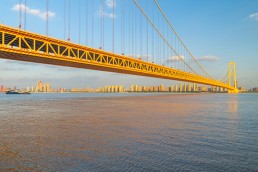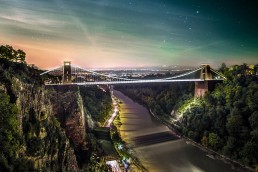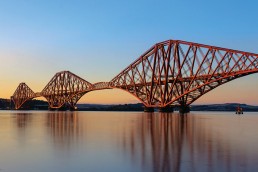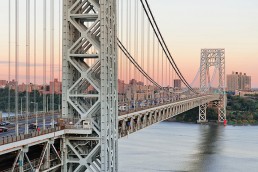Akashi Kaikyo Bridge 1998
Akashi Kaikyo Bridge 1998
© Shenghung Lin
© Sean Pavone
Akashi Kaikyo Bridge
The world's longest main span suspension bridge
Key Facts
Also known as the ‘Pearl Bridge’
Constructed after two ferries sank in the Akashi Strait
Designed to withstand earthquakes and strong winds
Location
Hyōgo Prefectur, Japan
Across the Akashi Strait
Connects Kobe (Honshu) with Iwaya (Awaji Island)
Designers / Engineers
Honshu Shikoku Bridge Authority
Satoshi Kashima (Lead Designer / Engineer)
Description
Steel truss suspension bridge
1,991m main span
3,911m total length
Main contractors
More than 100 contractors, including:
Mitsubishi Heavy Industries (Steel Superstructure)
Yokogawa Bridge Corporation (Steel Superstructure)
Construction
Began May 1988
Opened 5th April 1998
The Bridge
Before the Akashi Kaikyo Bridge was built, ferries carried passengers across the Akashi Strait in Japan. This dangerous waterway often experiences severe storms, and in 1955 two ferries sank in the strait during a storm, killing 168 people. The ensuing shock and public outrage convinced the Japanese government to develop plans for a bridge to cross the strait.
For Japan it’s now a symbol of national pride, and it was the final bridge that united the four main islands. The bridge provides easy access to the island of Shikoku for commerce and tourism.
World's Longest Span Bridges in 1998
The Engineering Challenge
Japan experiences some of the worst weather on the planet. Gale winds whip through the Strait. Hurricanes, tsunamis, and earthquakes rattle and thrash the island almost annually. The bridge was designed to withstand winds of 286km per hour (178mph), earthquakes measuring up to magnitude 8.5, and harsh sea currents.
During construction on 17th January 1995 the Kobe area was hit by the ‘Great Hanshin’ earthquake. The earthquakes epicentre was right between the two towers of the bridge which stood 1,990m apart. The seismic event moved the towers further apart by almost a metre, however, as only the towers had been constructed the change was easily accommodated.
Engineers placed 20 tuned mass dampers (TMDs) in each tower. The TMDs swing in the opposite direction of the wind sway. When the wind blows the bridge in one direction, the TMDs sway in the opposite direction, effectively “balancing” the bridge and cancelling out the sway.
© Tomoyuki Hatta































































